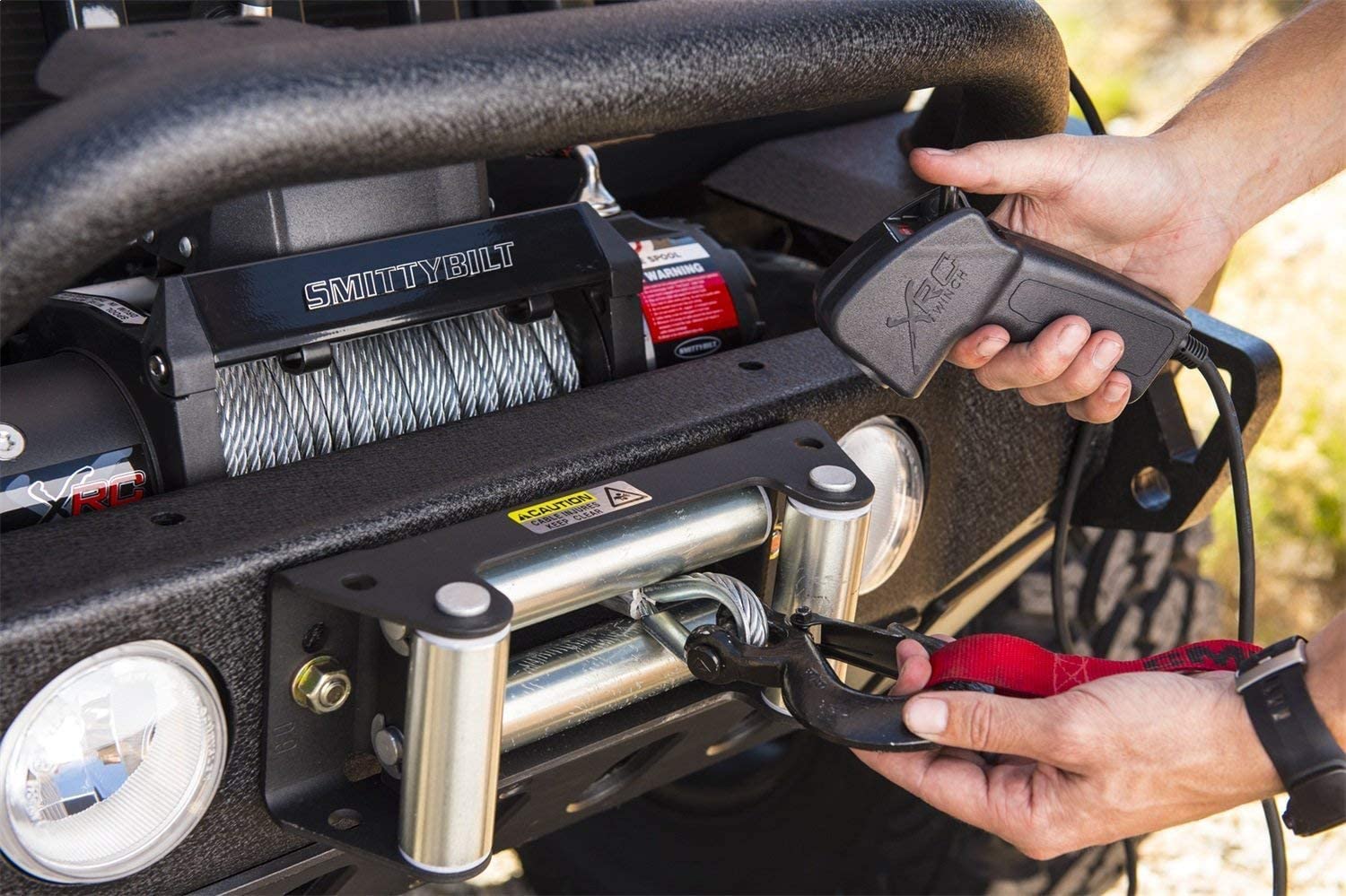Getting your truck stuck in mud, sand, or snow can be a frustrating and time-consuming experience. Knowing how to safely and effectively winch out a stuck truck is an essential skill for any off-road enthusiast or professional driver. Our step-by-step guide will cover assessing the situation, essential winching equipment, preparation, winching techniques, performing the winch-out, and post-winching activities[1].
1. Assessing the Situation
Before attempting to winch out a stuck truck, it is crucial to assess the situation to determine the best course of action. Consider the following steps:
Evaluate the stuck truck’s condition and surroundings
Inspect the truck’s tires and undercarriage for any visible damage or obstructions.
Determine the depth of the mud, sand, or snow and how it affects the truck’s mobility.
Identify potential hazards and obstacles
Look for nearby hazards such as rocks, tree stumps, or bodies of water that may pose a risk during the winching process.
Check for obstacles that could impede the truck’s movement once it is free from the stuck position.
Determine the most suitable winching technique
Based on your assessment, choose the appropriate winching technique to safely and effectively free the truck.
2. Essential Winching Equipment
Proper winching equipment is crucial for a safe and successful recovery. Ensure you have the following tools and accessories:
Winch with a suitable weight capacity
Select a truck winch rated for at least 1.5 times the gross vehicle weight (GVW) of the stuck truck to ensure it can handle the load. Refer these guides to choose right size truck winch and best truck winch
Tow straps or recovery straps
High-quality straps with a minimum break strength that exceeds the GVW of the stuck truck are necessary for connecting the winch to the truck and anchor point.
Snatch block
This pulley device increases the winch’s pulling power and allows for more flexible winching angles.
Tree saver strap or anchor point
Use a tree saver strap to protect the environment and prevent damage to the anchor point (e.g., a tree) when winching.
Winch dampener[2]
This safety device helps absorb energy and reduce the risk of injury in case a winch line or strap breaks during the winching process.
Gloves and other protective gear
Wear gloves to protect your hands from potential injury and use appropriate protective gear (e.g., safety goggles, boots) to ensure overall safety during the winching process.
3. Preparing for the Winching Process
Safely attach the winch to the stuck truck
Locate the truck’s recovery points[3] (usually found on the front or rear bumper) and securely attach the tow strap or recovery strap to the winch line.
Establish a secure anchor point
Choose a strong, stationary object such as a tree, rock, or another vehicle as your anchor point. Ensure it is aligned with the direction you want to pull the truck.
Rig the winching system using snatch blocks if needed
If the pulling angle is not optimal or additional pulling power is required, use snatch blocks[4] to set up a double-line pull or redirect the winch line.
Discuss safety measures during winching
Keep bystanders at a safe distance (at least 1.5 times the length of the winch line) and communicate with them throughout the process.
Ensure all connections are secure and the winch line is free of kinks or damage
Double-check that all straps, shackles, and the winch line itself are in good condition and properly attached.
4. Winching Techniques and Strategies
There are various winching techniques to consider, depending on the situation and available resources. Here are three common methods:
Single-line pull
The most straightforward technique, where the winch line is directly connected to the stuck truck and the anchor point. This method is suitable for situations where the truck is not severely stuck and the pulling angle is optimal.
Double-line pull
Involves using a snatch block to create a two-line pull, effectively doubling the winch’s pulling power. This method is ideal for heavier loads or trucks that are deeply stuck.
Assisted winching with another vehicle
Another vehicle can provide additional pulling power or act as an anchor point if no suitable stationary objects are available. Ensure both vehicles are compatible and can handle the stress of the winching process.
Factors to consider when choosing a technique include:
Available resources and equipment
Assess what equipment you have on hand and choose the most suitable technique accordingly.
Severity of the stuck truck’s situation
Consider how deeply stuck the truck is and whether additional pulling power is needed.
Environmental conditions
Take into account the ground conditions, weather, and other factors that may affect the success of the winching process.
Performing the Winch-Out
Step-by-step process of winching out the stuck truck:
-
- Ensure all connections are secure, and the winch line is taut before starting the winch.
-
- Slowly begin the winching process, applying steady and even pressure. Keep an eye on the winch line and the truck’s movement.
-
- Continuously communicate with any bystanders or helpers to ensure safety and coordination.
-
- If the truck becomes free but is not yet on stable ground, use the winch to guide it to a secure position before disengaging.
-
- If the truck does not move or the winch struggles, stop the process, reassess the situation, and make any necessary adjustments.
Emphasize safety precautions during the process:
-
- Never stand near the winch line while it is under tension.
-
- Use a winch dampener to minimize the risk of injury in case of line failure.
-
- Wear gloves and other protective gear to ensure personal safety.
-
- Monitor the winch motor temperature to prevent overheating.
Provide troubleshooting tips for common issues:
-
- If the winch line becomes stuck or tangled, stop the winch and carefully address the issue.
-
- If the anchor point is not holding, reassess and choose a different, more stable anchor point.
-
- If the truck is not moving despite the winch’s effort, consider adjusting the winching technique or using additional equipment (e.g., traction mats).
Post-Winching Activities
Inspect the truck for damage and ensure it is safe to drive:
-
- Check the tires, undercarriage, and suspension for any damage or debris.
-
- Assess the truck’s overall condition and ensure it is safe to operate before driving.
Properly disengage and store winching equipment:
-
- Carefully release tension on the winch line and disconnect all straps and shackles.
-
- Neatly coil the winch line, inspecting it for damage as you do so. Replace any damaged equipment as necessary.
-
- Clean and store all winching equipment in a dry, secure location to prolong its lifespan and ensure it is ready for future use.
Discuss the importance of regular winch maintenance:
-
- Regularly inspect your winch and its components for signs of wear or damage.
-
- Keep the winch motor and electrical connections clean and free of debris.
-
- Periodically lubricate moving parts according to the manufacturer’s recommendations.
-
- Perform load tests to ensure the winch operates at its rated capacity and maintains proper function.
I hope this article helped you to get out stucked truck. If you wish to read more ,I have more articles related to truck winch like How to wire a winch to a Truck, How to mount a winch on a truck ? etc, you can find more here
Conclusion
Winching out a stuck truck is an essential skill for off-road enthusiasts and professional drivers alike. By following the guidelines provided in this article, you can safely and effectively free your truck from various challenging situations. Remember always to prioritize safety, use the appropriate equipment and techniques, and maintain your winch for optimal performance. With proper preparation and practice, you’ll be well-equipped to handle any off-road recovery scenario that comes your way.
References
-
Simons, V. (2016). How to Use a Winch – Do’s and Don’ts Tips And Tricks for Safe 4×4 Recovery. MotorTrend. https://www.motortrend.com/how-to/1611-winching-dos-and-donts-tips-tricks-for-safe-4×4-recovery/
-
Seek Adventure. (2019, August 6). 4×4 winch Dampeners | Do they work? [Video]. YouTube. https://www.youtube.com/watch?v=gPba-34ARZY
-
Mellor, D. (2020b, August 25). Rated recovery points explained | Practical motoring. Practical Motoring. https://practicalmotoring.com.au/car-advice/rated-recovery-points-explained/#:~:text=often%2Dcommitted%20mistake.-,The%20recovery%20points%20should%20be%20located%20where%20the%20strap%20won,equipment%20to%20vehicle%20shipping%20points.
-
TJM. (n.d.). How snatch blocks work and how to use them. https://www.tjm.com.au/blog/how-snatch-blocks-work-and-how-to-use-them

